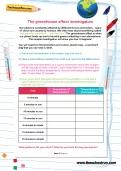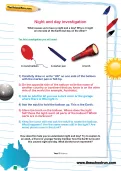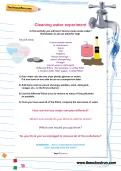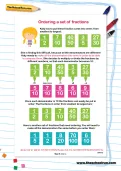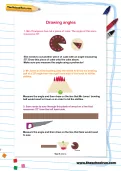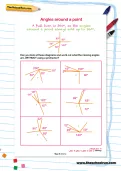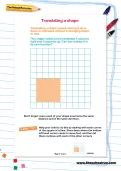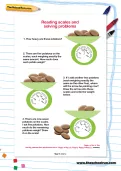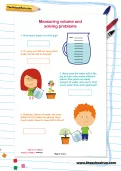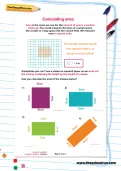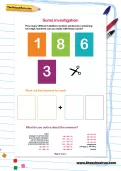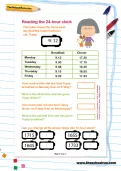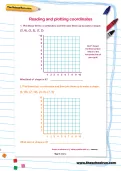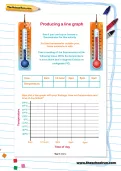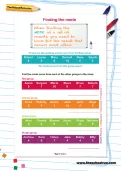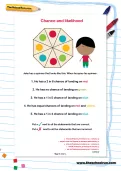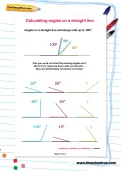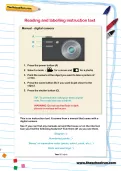Look how Katy puts these fraction cards into order, from smallest to largest. Can you follow Katy's method and then use it to order another set of fractions?
or
Register to add to your saved resources
Protractors at the ready! Measure these angles then draw the correct answers to these word problems.
or
Register to add to your saved resources
Already a subscriber? to view this content.
A KS2 maths worksheet created by an experienced teacher to help your primary-school child learn about angles.
A full turn is 360 degrees, so the angles around a point always add up to 360 degrees. Can you look at these diagrams and work out what the missing angles are, WITHOUT using a protractor?
or
Register to add to your saved resources
Already a subscriber? to view this content.
Translating a shape means moving it up or down or sideways without it changing shape or size. This shape needs to be translated 4 squares right and 3 squares up. Can you redraw it in its new location?
or
Register to add to your saved resources
Already a subscriber? to view this content.
Something is symmetrical when both sides of it are the same when cut in half. The line down the middle of a symmetrical shape is called the line of symmetry or mirror line. Can you draw this shape reflected in the mirror line?
or
Register to add to your saved resources
Already a subscriber? to view this content.
A KS2 numeracy worksheet created by an educator to help your child practise reading scales and solving problems.
or
Register to add to your saved resources
Broomsticks at the ready to work out these length problems!
or
Register to add to your saved resources
Already a subscriber? to view this content.
Can you work out the answers to these tricky volume problems?
or
Register to add to your saved resources
Already a subscriber? to view this content.
Area is the name we use for the amount of space a surface takes up. You could measure the area of a small space like a table or a big space like the school field. We measure area in square units. Can you calculate the area of these shapes?
or
Register to add to your saved resources
Already a subscriber? to view this content.
How many different addition number sentences containing two-digit numbers can you make with these cards?
or
Register to add to your saved resources
A KS2 maths worksheet created by an experienced teacher to help your child learn how to tell the time using the 24-hour clock.
or
Register to add to your saved resources
Plot these four co-ordinates and then join them up to make a shape. What kind of shape is it?
or
Register to add to your saved resources
Already a subscriber? to view this content.
See if you can buy or borrow a thermometer for this activity. Put the thermometer outside your home somewhere safe. Take a reading of the thermometer at the following times. Write the temperature in each blank box in degrees Celsius or centigrade. Now plot a line graph with your findings. How are temperature and time of day linked?
or
Register to add to your saved resources
This line graph shows how the temperature outside Mary’s house changes over the course of one day. Can you read the graph and answer the following questions?
or
Register to add to your saved resources
Already a subscriber? to view this content.
When finding the MODE of a set of results, you need to look for the result that occurs most often. Find the mode spelling score from each of the groups in this class.
or
Register to add to your saved resources
Already a subscriber? to view this content.
Jake has a spinner that looks like this. Can you work out which of the following statements are correct, thinking about chance and likelihood?
or
Register to add to your saved resources
Already a subscriber? to view this content.
Angles on a straight line will always add up to 180 degrees. Can you work out what the missing angles are? Don’t try to measure them with a protractor – they are deliberately not drawn correctly!
or
Register to add to your saved resources
Already a subscriber? to view this content.
This is an instruction text. It comes from a manual that came with a digital camera. See if you can find any manuals around the house or on the internet. Can you find the following features? Tick them off as you see them.
or
Register to add to your saved resources
Already a subscriber? to view this content.
A Year 5 (KS2) persuasive text example and activity, created by an experienced teacher and based on the use of persuasive texts in advertising.
or
Register to add to your saved resources
Already a subscriber? to view this content.
It is very common for English words to end in e. It is more unusual for words to end in a, i, o and u. This table shows words ending in these four vowels. How fast can you think of more? Time yourself! Many of these words are foreign, but are now used as part of the English language. Which countries did they come from?
or
Register to add to your saved resources
Already a subscriber? to view this content.
